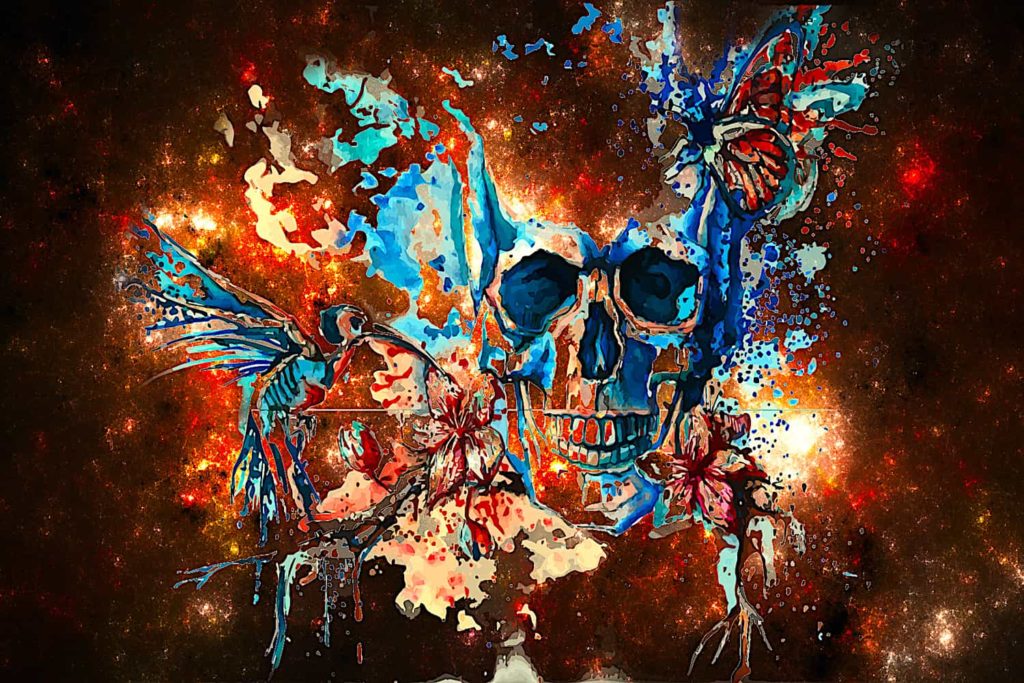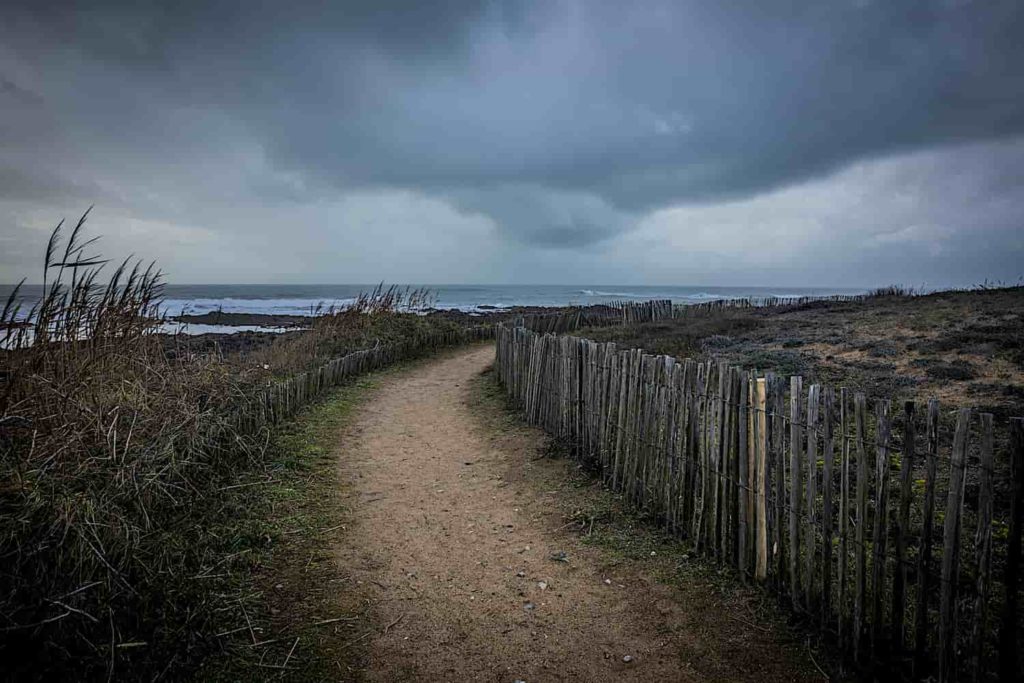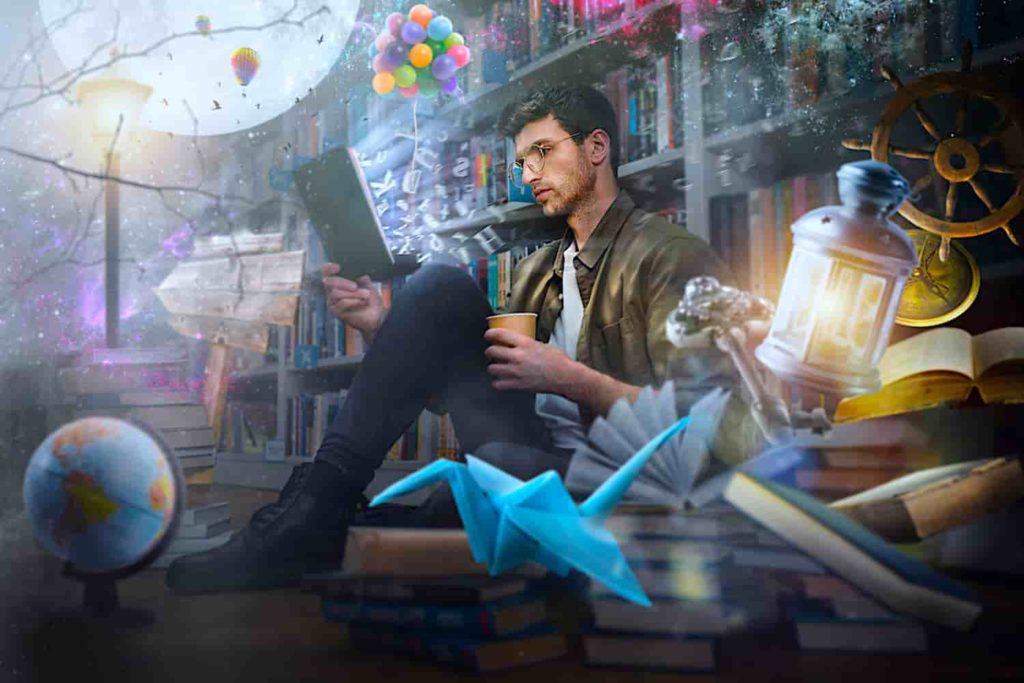
Creepy Creativity: American Horror Story (Season Ten) and Mangled Imagination
Despite being a big fan of Ryan Murphy’s musical comedy series Glee, I had never seen Murphy’s other long-running hit series American Horror Story. My husband, however, has been a devotee of all the previous seasons, which each tell a separate ghoulish story. Despite the show’s accolades and my husband’s fandom, I hadn’t planned on watching this season until he told me that its principal theme was creativity. My interest was piqued.
Season Ten is broken into two parts, each telling a different story. The first six episodes are a tale of creativity entitled, “Red Tide,” which is the subject of this post. The first part of the season ends with an episode originally airing on September 22, 2021, but available for streaming after that. If you haven’t seen the first six episodes (the first story), read on only if you don’t mind a few very general spoilers.
By the time I had finished watching the first episode of Season Ten, I knew I had to write a blog post about it. I didn’t want to write a straight-forward review, although I definitely have aesthetic opinions about it; rather, I wanted to focus on the way that the first story of the season plays with cultural ideas about creativity.
The Premise and Characters
The story begins with a small family of three who moves to the seaside resort town of Provincetown, Massachusetts for a few months in the off-season to focus their creative energies. The husband is a television writer; the wife has a new-found interest in interior design; and the daughter is a precocious home-schooled violin prodigy.

Things get creepy almost immediately when the family has several run-ins with zombie-like locals. Within the first two episodes, the viewers find out that a locally produced drug designed to enhance creativity makes people into either vampires or zombies. The series doesn’t use those terms, but the cultural references are clear. Truly creative people who take the little black pill become very successful in their art, although they now need to feast on uncooked flesh, preferably of the human variety (they’re the vampires). Regular, uncreative people who take the drug never amount to anything nor leave the town, but they also need to devour fresh meat (they’re the zombies).
The premise is not subtle, yet the story manages to reveal many cultural ideas about creativity through a large cast. The main characters are undoubtedly the family of three, along with two vampire authors who have wintered in the sea-side town for years. These two stylish blood suckers have stunningly successful careers and serve as mentors to the husband/father of the young family. Although none of the lead characters are particularly likeable, the series introduces a variety of intriguing secondary roles that help flesh out the story. A seemingly mentally ill homeless woman, a sex worker (played by Macaulay Culkin), and a dentist/tattoo artist are three examples of compelling characters who breath some amount of soul into the bleak story.
Creativity… and Much More
This is a horror story, and the setting is the stark winter landscape of a sea-side town, but the view the show displays of creativity and of contemporary society is equally bleak.
It’s somewhat misleading to characterize this season of American Horror Story as about creativity. I would contend that it is about many topics, horror above all, but also economic inequality, the plight of America’s small towns, and the opioid crisis. Creativity operates as a backdrop onto which the societal critique plays out. To this end and almost necessarily, the series uses prejudices about creativity and creative people, sometimes brazenly and self-consciously and other times seemingly unintentionally. Here I discuss three of the cultural preconceptions about creativity that play out in the story.
1) Creativity only manifests itself in the arts.
One of the founding premises of this blog is that creativity can be expressed in any endeavor (profession or pastime), not exclusively the arts. This is in line with what most researchers in the various fields of creativity also contend, although the broader culture still closely identifies creativity with artistic pursuits.

In the series, writers are the primary representatives of creatives, with three of the main characters and several of the supporting ones engaged in this art. This is unsurprising as both Ryan Murphy and Brad Falchuk (the other producer of the show) are writers. The program also presents musicians and visual artists as creatives, but one profession particularly gets raked over the creative coals: interior design. The target of most of the series’ scant levity is focused on ridiculing the “wannabe” interior designer in the character of the wife/mother of the family. Some arts come off better than others, but all the show’s creatives are artists. The series makes no allowance for imaginative talent exercised in other realms.
2) Parents inevitably mess up their creative children, making them into horrible individuals.
This notion primarily manifests in the character of the violin-playing daughter. In order not to reveal too much, I’ll just say that the little girl starts out as a fairly appalling character, and only gets worse, partly due to her parents’ terrible tutelage.
We also get a glimpse of this stereotype with the dentist/tattoo artist. In our first interaction with her, we find out that she only studied dentistry because her parents didn’t support her creative tendencies… and so she became a vampire. Take that, Mom and Dad!
We don’t have direct insights into the parentage of the other characters. What we do have is the outcome: all the creatives in the story are either terrible people or have lives that have gone completely off the rails. I would be surprised if anyone came away from the series with a strong desire to be (or to parent) a creative person.
3) Creativity is an elitist trait.
This, for me, is the most problematic aspect of American Horror Story, Season Ten. The world of “Red Tide” is divided into two groups: those who have real talent and those who do not. The little black pill delivers terrible outcomes for both groups, but they are decidedly worse for those unfortunate souls who are supposedly uncreative.
One of the reasons that I initially became interested in creativity was the fact everyone has access to it. American Horror Story’s insistence on the contrary is disappointing.

In the series, there is an attempt to rationalize away this elitism using science. The audience is told that there are differences in the brain that explain why a small number of people are creative and rest of society is not. Again, this goes against most of what neuroscience says about creativity. The show does not dwell on this point, so I won’t do so here. I do think, however, that it is problematic to promulgate the popular misconception that most people are inherently (and biologically) uncreative.
A Final Critique
The genre of horror always requires a certain suspension of disbelief. I don’t believe in Freddy Krueger, Michael Myers, Jason Voorhees, or the metaphysics of the worlds they inhabit, but I sometimes like being scared by them. In a similar way, I enjoyed being creeped out by this tale from Season Ten of American Horror Story. The final chapter does rush through the story’s resolution, but even so, I might be tempted to watch all six episodes again on a damp and dreary winter day. The show contains some interesting societal critique, even if it does get creativity all wrong. If you do watch it, the most important thing is not to be taken in by the idea that some people are inherently imaginative, and others are simply not. The little black pill that enhances creativity does not exist, my dear goblins, but if it did, you would all be fabulous vampires.